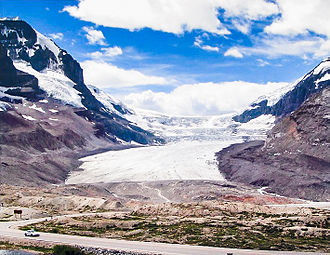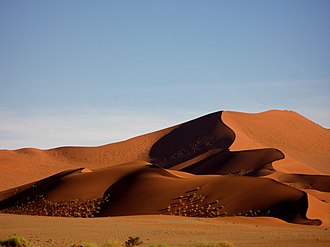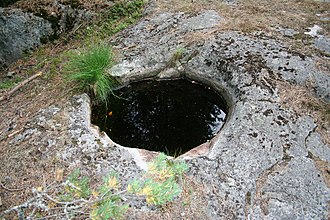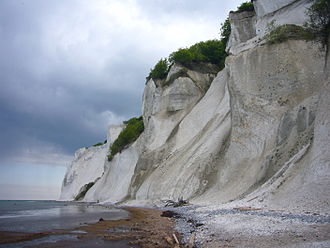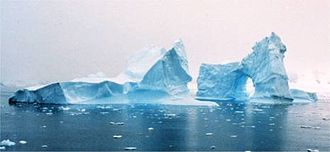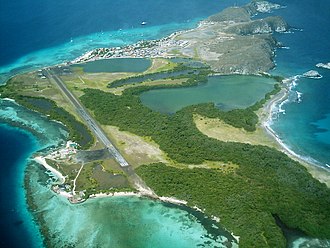Especialidades JA/Geología - Avanzado/Respuestas
| Geología - Avanzado | ||
|---|---|---|
| Asociación General
|
Destreza: 2 Año de introducción: 1975 |
|
Requisitos
|
La especialidad de Geología - Avanzado es un componente de la Maestría Conservación. |
1
Para consejos e instrucciones, véase Geología.
2
2a
2b
2c
2d
The sorting could also be a physical phenomenon based on the shape and density of the animal, much as small rocks make their way to the bottom of a sediment, while larger rocks make their way to the top. In this case, the creatures are acting just as the rocks, with mollusks and insects being sorted to the bottom, and tigers and rhinos making their way to the top.
2e
It was a creationist, Antonio Snider, who proposed the movement of continents during the flood. Genesis 1:9-10 indicated the land was one mass and the waters were gathered together in one place. The puzzle piece scenario of the continents, displacement of fossils and seismic observations led them to further believe that there is no slow formation. It has been stated that rapid magnetic field reversals could have happened during the flood. With the way continents move today one would have to conclude an ocean basin or mountain range would have taken about 100 million years to form. The concept that this all happened rapidly is called catastrophic plate tectonics. If crustal spreading zones expanded, hot material would rise up to the surface, heat the water and potentially cause steam to shoot into the atmosphere. This steam would turn into water vapor and fall down later as intense rain. This is one possible explanation for the 40 days of rain. The flood also answers the question of large sediment deposits.
3
3a
Large glaciers are found in Antarctica, Greenland (and other arctic areas) and on mountain tops.
3b
3c
3d
3e
Fiords (more commonly spelled fjords) are found between rocky headlands, especially in Scandinavia, but also in other parts of the world, such as Denmark. A fjord is a part of a valley made by a glacier or river from the glacier. Most of the fjord is below the current sea level, and thus filled with sea water.
3f
Fault-block mountains are common in the Basin and Range region of the western United States.
3g
Folded mountains occur in Orogenic zones such as the Himalayas in Asia, the Rocky Mountains in North American, and the Andes in South America.
3h
The Chalk Formations of Europe are thick deposits of chalk, a soft porous white limestone, deposited in a marine environment during the upper Cretaceous Period. They appear most prominently in England.
3i
Icebergs can be found in arctic areas such as Antarctica, the Arctic Ocean, Iceland, and Greenland.
3j
4
4a
Interesting geology could be mountain ranges, valleys, glacial lakes (such as the Great Lakes in the United States), or even road cuts (for close-up geology). Caves, beaches, plains, and river systems and deltas also provide interesting geological features.
The trip needn't be a long one, though long trips will provide more varied features.
Things to consider when writing the report are the answers to questions such as:
- How was the feature formed?
- What are the rocks made of?
- How is the geology likely to change in the future?
- Did water play a part in the formation of the features? How?
4b
Heavy rains often cause local flooding. Rivers and streams can change course, often washing away roads and buildings. Floods also deposit sediments in fields.
Windstorms can blow down trees (even in large numbers), making the area more susceptible to erosion. They can also create, destroy, or reshape sand dunes.
References
- Categoría: Tiene imagen de insignia
- Adventist Youth Honors Answer Book/Honors/es
- Adventist Youth Honors Answer Book/es
- Adventist Youth Honors Answer Book/Skill Level 2/es
- Categoría: Libro de respuestas de especialidades JA/Especialidades introducidas en 1975
- Adventist Youth Honors Answer Book/General Conference/es
- Adventist Youth Honors Answer Book/Nature/es
- Adventist Youth Honors Answer Book/Nature/Primary/es
- Adventist Youth Honors Answer Book/Stage 0/es
- Adventist Youth Honors Answer Book/Conservation Master Award/es
- AY Honors/Prerequisite/Geology/es
- AY Honors/See Also/Geology/es
- Adventist Youth Honors Answer Book

